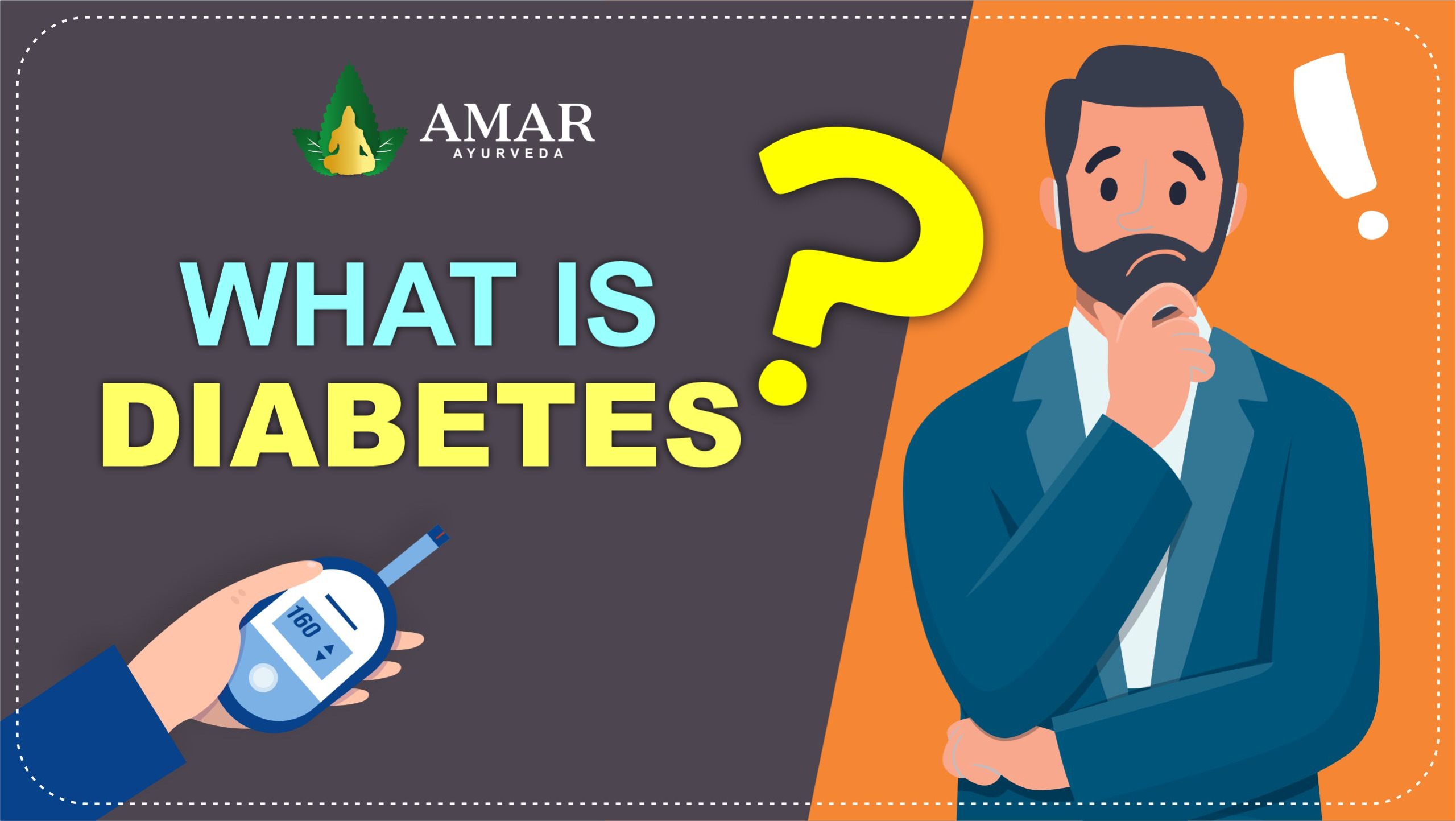Know Everything About Diabetes?
Diabetes is a disease which occurs when your blood sugar (glucose) is excessively high. It is triggered because your pancreas does not produce sufficient insulin or when your body’s response isn’t with the insulin effects in a proper manner. Diabetes disease affects all ages. The majority of cases that are caused by diabetes can be considered chronic (lifelong) and any form can be controlled with medication and/or lifestyle modifications.
Glucose (sugar) is primarily derived mostly from carbohydrates found in beverages and food. It is your body’s primary for energy. The blood supplies glucose to your cells to help you get energy.
If glucose is present in the bloodstream of your body, it requires assistance -by a “key” – to get to its destination. The key can be found in insulin (a hormone). If your pancreas hasn’t produced sufficient insulin, or your body isn’t utilizing it in a proper way glucose accumulates in your bloodstream, which can cause an increase in blood sugar levels (hyperglycemia).
Having constantly high blood sugar levels over time might lead to health problems like cardiovascular disease, nerve damage and vision problems.
Diabetic mellitus is the scientific term used to define diabetes. Another condition sometimes referred to as “diabetes” is diabetes insipidus; they are not the same. They are both referred to as “diabetes” because they both result in more frequent urination and thirst. The incidence of diabetes insipidus is lower than diabetes mellitus.
Buy Best Diabetes control powder
what are the types of diabetes
There are a variety of forms of diabetes. The most popular types include:
what is type 2 diabetes
This type is because your body does not produce enough insulin, or the cells of your body don’t respond normally to hormone insulin ( insulin resistance). Clearly the most common type of diabetes is this one. It is most prevalently seen in adults, however children may also be affected.
prediabetes diabetic
This is the early stage of Type 2 diabetes development. Although your patients’ blood sugar levels are higher than normal but not sufficient to be diagnosed as Type 2 diabetes.
what is type 1 diabetes
This is an autoimmune disorder that occurs when the immune system targets and destroys pancreas insulin-producing cells due to unknown reasons. About 10% of those suffering from diabetes have Type 1 diabetes. The majority of cases are detected in young children and adults, but it may occur at any time.
gestational diabetes mellitus
the condition is seen in a few people during the pregnancy. Gestational diabetes typically disappears following the birth of a child. If you do have gestational diabetes you have a greater chance of developing Type 2 diabetes in the course of your life.
Other types of diabetes consist in:
Type diabetes 3c
The form of diabetes is caused when your pancreas is damaged (other than the autoimmune damages) that affects the ability of it to make insulin. pancreatitis, pancreatic cancer, cystic fibrosis and hemochromatosis are all causes of the pancreas becoming damaged, which can cause diabetes. The removal of your pancreas ( pancreatectomy) may also cause the development of Type 3c.
Adults having latent autoimmune diabetes (LADA)
it is more slow than Type 1, the disorder results from an autoimmune reaction, same as in Type 1 diabetes. Those diagnosed with LADA often have more than thirty years of age.
The development of Maturity-onset Diabetes in Young People (MODY)
MODY, also known as monogenic diabetes, is because of an inherited gene mutation which affects the way in which your body produces and utilizes insulin. There are at present more than 10 kinds of MODY. It is a problem that affects as much as 5 percent of those who suffer from diabetes, and is most often found within families.
Neonatal diabetes: It’s an uncommon form of diabetes that can be found in the initial six months after birth. It’s also a type which is called monogenic diabetes. About half of the babies who suffer from neonatal diabetes develop the long-lasting form known as permanent diabetic mellitus in neonatal babies. The other half of the condition is gone within a few months of the time of onset, but it may recur later in the course of. It is known as transient neonatal diabetic mellitus.
Brittle-diabetes: Brittle diabetes is an aspect associated with Type 1 diabetes that’s marked by frequent and severe instances of low and high glucose levels. This can lead to hospitalization. In rare instances it is possible to have the need for an organ transplantation of the pancreas could be required for a permanent cure of brittle diabetes.
Signs and symptoms of diabetes
Your kind of diabetes will determine the causes of it.
General symptoms
The symptoms of types 1, type 2 and 1.5 (LADA) appear to be the same , however they are seen in less time than type 2 and 1.5. In the type 2 condition the onset is likely to be a bit slower. Sores that itch and heal slowly are more prevalent in type 2.
If not treated the type 1 particularly, could lead to ketoacidosis in diabetics. This happens when there’s an elevated ketones level within the body. This is less prevalent in other forms of diabetes,
The most common symptoms of diabetes are:
- more appetite
- an increase in thirst
- weight loss
- frequent urination
- blurry vision
- Extreme fatigue
- sores that won’t heal
Symptoms in men
Apart from the usual diabetes symptoms, those with the condition could also experience:
- A reduced sexual desire
- erectile dysfunction
- poor muscular strength
Symptoms in women
Diabetes sufferers could have symptoms including:
- Vagina dryness
- UTIs
- yeast infection
- dry, itchy skin
How do you diagnose diabetes?
A range of tests examining blood sugar (glucose) levels helps to make the diabetes diagnosis. The most often utilized tests are seen below:
1. Fasting Plasma Glucose (FPG) Test:
The blood sugar level is measured after fasting at least 8 hours (no drinking or eating except water).
Diagnostic criteria:
- Normal less than 100 mg/dL
- Prediabetes: 100 to 125 mg/dL
- Diabetes is a condition that causes a blood sugar level of 126 mg/dL and higher on two different tests
2. Oral Glucose Tolerance Test (OGTT):
What is the procedure? After eating a fast, the person consumes a sugary drink, and the levels of blood sugar are monitored two hours prior to and after the drink has been consumed.
Diagnostic criteria (2 hours following the consumption):
- Normal less than 140 mg/dL
- Prediabetes: 140 to 199 mg/dL
- Diabetes Amount: 200 mg/dL and higher
3.A1C Test (Hemoglobin A1C or HbA1c):
The test is designed to measure normal blood sugar levels for the last three months.
Criteria for diagnosis:
- Normal less than 5.7 Percentage
- Prediabetes: 5.7% to 6.4%
- Type 2 Diabetes 6.5 percent or greater on two different tests
4. Random Plasma Glucose Test:
The procedure is How it’s done: Blood sugar tests are conducted at any point of the day, regardless of the time the patient last ate.
Diagnostic criteria:
A reading of 200 mg/dL and higher indicates diabetes, particularly when the patient exhibits symptoms such as thirstiness and frequent urination. an unspecified weight loss.
Additional Testing:
Autoantibody Tests: To determine if you have type 1 diabetes particularly in patients younger than age the autoantibodies (immune markers) are tested to determine if there is an autoimmune cause.
Ketone Testing: A high level of ketones in blood or urine may be a sign of type 1 diabetes.
If one of these tests shows unnatural results, the doctor usually will run the test again to confirm the diagnosis.
diabetes treatment
Different drugs help doctors treat diabetes. While some drugs are given orally, others are injected.
Type 1 and 1.5 Diabetes
Insulin is the most effective cure for both type I and 1.5 diabetes. It replaces the hormone that your body can’t produce.
There are many types of insulin frequently used by patients who suffer from type 1 and 1.5 diabetes. They differ in the speed at which they begin to work and how long the effects last.
Rapid-acting insulin: starts working in fifteen minutes. The effects run two to four hours.
Short-acting insulin: Starting within 30 minutes, short-acting insulin lasts three to six hours.
Intermediate-acting insulin: starts working between 2 and 4 hours, and lasts from 12 to 18 hours.
Long-acting insulin: starts to work after 2 hours of the injection and lasts for 24 hours.
Ultra-long acting insulin: starts to work within 6 hours of injection, and lasts for 36 hours or more.
Depending on the kind of insulin included in the combination, premixed insulin starts to work 15 to 30 minutes and lasts from 10 to 16 hours.
Type 2 diabetes Treatment
Exercise and diet can aid some people in managing the symptoms of type 2 diabetes. If lifestyle changes don’t suffice to reduce the blood sugar levels, you’ll require medications.
The drugs can lower blood sugar in a number of ways:
What effects does diabetes have on the body?
When someone has diabetes their blood sugar levels are high. The sugar glucose is a type of sugar, which is the primary energy source that our bodies require. The presence of high levels of glucose in blood could cause short-term and long-term health issues.
Every activity our bodies perform requires energy. In order for our bodies to function effectively, we must convert the carbs in our food, such as sugars and starch into glucose that enters the bloodstream and gets transported into the cells of the body. If we don’t consume enough carbohydrates, the body produces glucose using proteins and fats.
A hormone known as insulin is created through the pancreas. It functions as a key to unlock the door of the cell’s doors to allow glucose into where it is utilized to generate energy.
For people suffering from diabetes, depending on which type of diabetes they have, insulin is either not being produced or it is not produced enough or the body isn’t using it as efficiently as it did in the past. If people suffering from diabetes consume food that contains carbohydrates, glucose is unable to be absorbed into the cells of the body because the cell’s ‘doors’ aren’t shut. The glucose remains in the blood, which results in high levels of glucose in the blood.
In the short run the elevated concentrations of blood glucose can make you feel exhausted, and your kidneys try to get some of the glucose out of the body through urine. This is why you use the bathroom frequently. You may also have to go to the toilet more often and could lead to dehydration and feeling thirsty.
In the long run, elevated blood glucose levels can cause damage to blood vessels of both sizes and nerves, which could cause harm to your brain, heart, eyes, kidneys, eyes, and feet.
Glucose levels can be tracked by using a blood glucose monitor as well as a continuous monitor for glucose. Blood glucose levels can be controlled by the self-care process and treatments.
Three things you should be aware of about diabetes:
- It’s not a single condition There are three major kinds that are diabetes-related: type 1, type 2 and gestational diabetes
- All forms of diabetes are complicated and require regular treatment and treatment
- Diabetes doesn’t discriminate. Anyone can be affected by diabetes.
Why is diabetes increasing?
Diabetes is on increasing worldwide due to several factors, including increased obesity rates, sedentary lifestyles, and bad eating habits. People are eating more processed and sugary meals, which can contribute to weight gain and reduced insulin sensitivity. Urbanization and technological improvements have lowered physical exercise, which has led to weight increase and metabolic problems. Stress, inadequate sleep, and smoking all lead to insulin resistance and type 2 diabetes. Furthermore, as the body’s capacity to regulate blood sugar weakens with age, older people are more likely to acquire diabetes. Environmental and genetic factors intensify this worldwide health concern.
Conclusion
Diabetes is a complicated disorder caused by the body’s inadequate insulin production or inappropriate insulin usage, which results in increased blood sugar levels. It affects people of all ages and can lead to major health problems if left untreated. While the illness is typically chronic, it can be efficiently controlled via lifestyle modifications, drugs, or insulin treatment, depending on the kind. Given the increased global incidence of diabetes, particularly type 2, it is critical to emphasize prevention via balanced eating, regular physical exercise, and early identification to reduce long-term health concerns.
FAQ on what is Diabetes ?
Q.1. What is called diabetic?
Answer: A “diabetic” is a person who has diabetes, a condition in which blood sugar levels are abnormally high due to the body’s inability to create or use insulin.
Q.2. How does insulin work in the body?
Answer: Insulin, a pancreatic hormone, functions like a key, allowing glucose from the circulation to enter cells and give energy. Without sufficient insulin or appropriate insulin activity, glucose remains in the circulation, resulting in high blood sugar.
Q.3. What are common symptoms of diabetes?
Answer: Symptoms include increased appetite, thirst, frequent urination, weight loss, weariness, blurred eyesight, and non-healing wounds.
Q.4. What are the risks of untreated diabetes?
Answer: Diabetes, if left untreated, can cause consequences such as heart disease, nerve damage, renal difficulties, and vision problems.
Q.5. Can diabetes be prevented?
Answer: While Type 1 diabetes cannot be avoided, Type 2 diabetes may frequently be delayed or prevented with lifestyle modifications, such as maintaining


